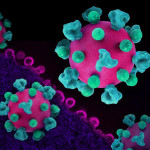People who took a regimen including efavirenz (found in Sustiva and Atripla) for five days each week, with two-days off over the weekend, had similar viral load reductions and side effects as people who took their regimen continuously. What’s more, people on the on-off approach reported universally that they preferred intermittent therapy to continuous therapy. Cal Cohen, MD, from the Community Research Initiative (CRI) in Boston, presented the study at the Fifth International AIDS Society (IAS) Conference on HIV Pathogenesis, Treatment and Prevention in Cape Town.
People with HIV have long sought the opportunity to take their antiretroviral therapy less often, but results of treatment interruption trials have been mixed, at least for longer interruptions. The researchers at CRI set out to determine whether short, two-day, weekly treatment interruptions may be safe and effective. Their study, Five-days-On, Two-days Off (FOTO), enrolled 60 HIV-positive patients who were new to HIV treatment. Half were randomized to the intermittent treatment arm, and half to the continuous therapy arm.
Cohen previously presented 24-week data from the study in November 2008, at the Ninth International Congress on Drug Therapy in HIV Infection in Glasgow. That early look at the data was promising, and the 48-week data have continued in the same vein.
Ten people dropped out of the study before the end of the 48 weeks. All had a viral load of less than 50 copies at the time they discontinued. Reasons for discontinuation included loss to follow-up, withdrawal of consent to participate and one pregnancy.
At the 24-week time point, 100 percent of the patients in the interruption arm had a viral load of less than 50 copies, compared with 86 percent in the continuous therapy arm. After 24 weeks, all of the patients in the continuous therapy arm switched to intermittent therapy. At 48 weeks, 90 percent of those participants had a viral load less than 50 copies.
Adherence in neither group was superior at 24 weeks. Eight percent of people in the intermittent therapy arm reported at week 24 that they took an extra day off treatment at least once during the first 24 weeks. Eleven percent in the continuous therapy arm reported missing a dose. Yet despite the extra doses missed, people in the intermittent treatment arm did remarkably well.
Though the study is small and larger studies will be needed to confirm the efficacy and safety of this strategy, people in the study liked it quite a bit. Those who’d been on the continuous therapy arm and then switched to intermittent treatment told researchers that they much preferred taking intermittent treatment. The authors also note that the total cost of treating a patient on intermittent therapy is 28 percent less than patients on continuous therapy.
Advertisement
Advertisement
Advertisement






2 Comments
2 Comments